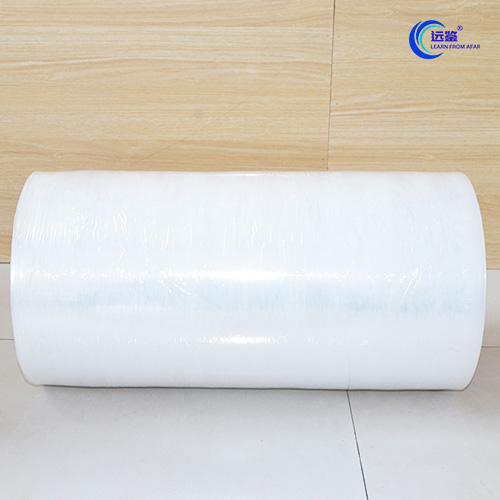Machine stretch film
Wrap film, also known as stretch fllm, is produced using an imported linear polyethylene LLDPE resin and a special additive proportion formula for viscosity enhancers. Wrapping and stretching film packaging is a very popular packaging form internationally, with high strength and elasticity, which can tightly wrap any geometric shape of goods and avoid damage caused by bundling. It has good anti loosening, rainproof, dustproof, anti-theft and other effects, and is widely used in the collection packaging and tray packaging of goods, such as containers (cans), chemical, ceramic, glass, hardware mechanical equipment (stainless steel plates), papermaking (paper cutting), textiles, furniture, food industry (soft packaging beverages), electronic product boxes and other industries.
There are two types of wrapping film: machine use and manual use. Manual wrapping only requires a handheld unwinding rack with damping brake, and one person can hold it to wrap the package, making it lightweight and flexible, tailored to local conditions. Machine winding should be packaged in batches and equipped with a winding machine, which has high production efficiency, uniform and beautiful appearance, good packaging quality, and fast speed.
Good adhesion makes the packaging film layer on the outside of the goods stick together to make the goods firm. There are two main methods to obtain adhesion: one is to add PIB or its masterbatch to the polymer; Another approach is to mix VLDPE. PIB is a semi transparent viscous liquid that requires specialized equipment or modification for direct addition. Generally, PIB masterbatch is used. The migration of PIB is a process that usually takes three days, and is also affected by temperature. When the temperature is high, the viscosity is strong; When the temperature is low, it is not very sticky, and after stretching, the viscosity is greatly reduced. Therefore, it is best to store the finished film within a certain temperature range (it is recommended to store it at a temperature of 15 ℃ to 25 ℃). Mixing VLDPE has slightly lower viscosity, but there are no special requirements for the equipment. The viscosity is relatively stable and not controlled by time, but also affected by temperature. It is relatively sticky when the temperature is above 30 ℃, and slightly worse when it is below 15 ℃. The required viscosity can be achieved by adjusting the amount of LLDPE in the adhesive layer. This method is commonly used in three-layer co extrusion.


